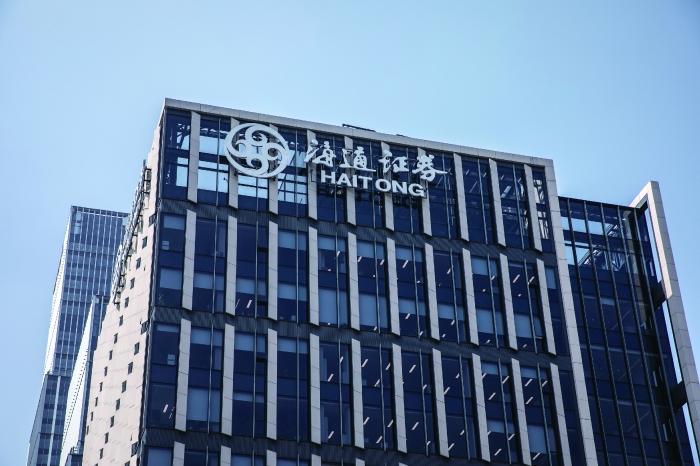Introduction
Rising interest rates often signal changes in the economic environment that can have a significant impact on financial markets. When central banks, such as the Federal Reserve, raise interest rates to control inflation or cool down an overheating economy, it creates ripple effects across various sectors and asset classes. For investors, a rising interest rate environment presents both challenges and opportunities.
Interest rate increases tend to affect the cost of borrowing, the value of existing bonds, and the profitability of certain industries. Therefore, the key to navigating a rising rate cycle is understanding how different securities respond to rate hikes and identifying those that are likely to perform well despite the pressures.
This article will explore the various factors to consider when selecting high-quality securities during a rising interest rate environment, helping investors make informed decisions to optimize returns while managing risk.
1. Understanding the Impact of Rising Interest Rates
Before diving into specific strategies for selecting securities, it’s important to first understand how rising interest rates affect different financial assets:
- Bonds: When interest rates rise, the price of existing bonds tends to fall. This is because newly issued bonds will offer higher yields, making older bonds with lower yields less attractive. The longer the maturity of a bond, the more sensitive it is to interest rate changes. This is known as interest rate risk.
- Equities: Rising rates can have mixed effects on stock prices. On the one hand, higher borrowing costs can reduce corporate profits, particularly for companies with significant debt. On the other hand, certain sectors, like financials, may benefit from higher rates due to increased profit margins on loans.
- Real Estate: Higher interest rates often lead to higher mortgage rates, which can reduce demand for housing and commercial real estate. However, real estate investment trusts (REITs) may offer higher yields to offset this impact.
- Commodities: Rising interest rates can strengthen the currency, making commodities more expensive for international buyers. As a result, the performance of commodity-related stocks can be negatively affected by higher rates.
2. Key Sectors to Focus On During a Rising Interest Rate Cycle
While rising interest rates can create challenges, certain sectors historically perform better in this environment. Here’s a look at industries and asset classes that are more likely to provide attractive returns during a rate hike cycle:
2.1 Financial Sector
The financial sector, particularly banks and insurance companies, tends to benefit from rising interest rates. This is because these companies often borrow money at short-term rates and lend at long-term rates, which allows them to benefit from a wider interest rate spread. When interest rates rise, the difference between what financial institutions pay on deposits and what they earn on loans increases, boosting their profitability.
Why Financial Stocks Thrive in Rising Rate Environments:
- Wider interest rate spread: Banks make more money from loans as the cost of borrowing rises.
- Higher margins: Insurance companies can benefit from higher returns on their fixed-income investments.
Examples of Financial Stocks:
- JPMorgan Chase (JPM): One of the largest U.S. banks, JPMorgan is well-positioned to capitalize on higher interest rates due to its diversified financial services business.
- Berkshire Hathaway (BRK.B): Warren Buffett’s holding company has significant investments in financial institutions, including insurance companies like GEICO, which can benefit from rising rates.
2.2 Dividend-Paying Stocks
In a rising interest rate environment, dividend-paying stocks can be an attractive choice. While high-interest rates make bonds more appealing, dividend stocks provide an alternative source of income. Stocks that consistently pay reliable dividends—particularly those in sectors like utilities, consumer staples, and healthcare—tend to be favored by income-seeking investors.
Why Dividend Stocks Are a Good Choice:
- Steady income stream: Dividend-paying companies offer consistent cash flow, which can appeal to investors seeking yield when bond yields are rising.
- Stability: Dividend stocks are often from well-established, stable companies that can weather economic cycles better than high-growth, speculative stocks.
Examples of Dividend Stocks:
- Procter & Gamble (PG): A consumer goods giant known for its consistent dividend payments, P&G tends to be resilient during rising rate cycles.
- Johnson & Johnson (JNJ): A healthcare leader with a strong track record of dividends, J&J provides stability and reliable income.
2.3 Short-Duration Bonds
As mentioned earlier, rising interest rates tend to cause bond prices to fall, especially for long-term bonds. However, short-duration bonds are less sensitive to interest rate changes. They mature faster, so investors can reinvest the principal at higher rates as interest rates rise, thereby reducing the overall impact of rate hikes.
Why Short-Duration Bonds Are a Smart Choice:
- Less interest rate risk: Short-duration bonds are less affected by rising rates since they have a shorter time to maturity.
- Reinvestment opportunities: As bonds mature, investors can reinvest in higher-yielding bonds, capitalizing on the rising interest rate environment.
Examples of Short-Duration Bonds:
- Short-Term Treasury Bonds: U.S. government bonds with short maturities (e.g., 1-3 years) provide a safe haven with less price volatility.
- Corporate Short-Term Bonds: Bonds from well-established companies with shorter maturities can also offer a relatively stable income stream.
2.4 Real Estate Investment Trusts (REITs)
Although rising interest rates can hurt the real estate sector by increasing mortgage rates, certain types of real estate investment trusts (REITs) can perform well during a rising rate cycle. Specifically, commercial REITs and industrial REITs that focus on long-term leases and essential real estate (e.g., warehouses and data centers) may be more insulated from rate hikes.
Why Some REITs Perform Well During Rate Hikes:
- Inflation protection: Many REITs have leases that are tied to inflation or include clauses that allow rents to rise with interest rates.
- Stable demand for commercial real estate: Long-term leases and essential property types can continue to generate strong cash flows despite higher borrowing costs.
Examples of REITs to Consider:
- Prologis (PLD): A leading industrial REIT, Prologis focuses on warehouse and logistics properties, which are in high demand due to e-commerce growth.
- Digital Realty (DLR): A data center REIT that provides essential infrastructure for the growing digital economy.

3. Factors to Consider When Selecting Securities in a Rising Interest Rate Environment
When selecting securities to hold in a rising interest rate cycle, investors should focus on companies and sectors that exhibit the following qualities:
3.1 Strong Financials
Companies with robust balance sheets and low debt levels are better positioned to handle rising interest rates. Debt-heavy companies may struggle with higher borrowing costs, so it’s important to assess a company’s debt-to-equity ratio and overall financial health.
3.2 Pricing Power
Look for companies that have strong pricing power, meaning they can pass on rising costs to consumers without significantly affecting demand for their products. This is especially important in sectors like consumer staples and healthcare.
3.3 Dividend Consistency
For long-term investors, dividend consistency is key. Companies that have a history of consistently paying and increasing dividends—especially those in defensive sectors—can provide a stable income stream even as interest rates rise.
3.4 Operational Efficiency
Companies that are able to operate efficiently and generate strong free cash flow are often more resilient in rising rate environments. Firms that rely on low-cost capital may struggle when borrowing becomes more expensive, but companies with strong operational efficiency can maintain profitability.
4. Conclusion
In a rising interest rate environment, investors need to be more selective when choosing securities. Sectors such as financials, dividend-paying stocks, short-duration bonds, and certain REITs offer strong opportunities for long-term investors. By focusing on companies with strong financials, pricing power, consistent dividends, and operational efficiency, investors can navigate the challenges of higher rates while positioning their portfolios for success.
The key is to balance risk and reward by identifying quality securities that can weather the storm of rising rates while still offering opportunities for growth and income. By doing so, investors can protect their portfolios against the adverse effects of interest rate hikes while capturing potential gains in the market.

















































